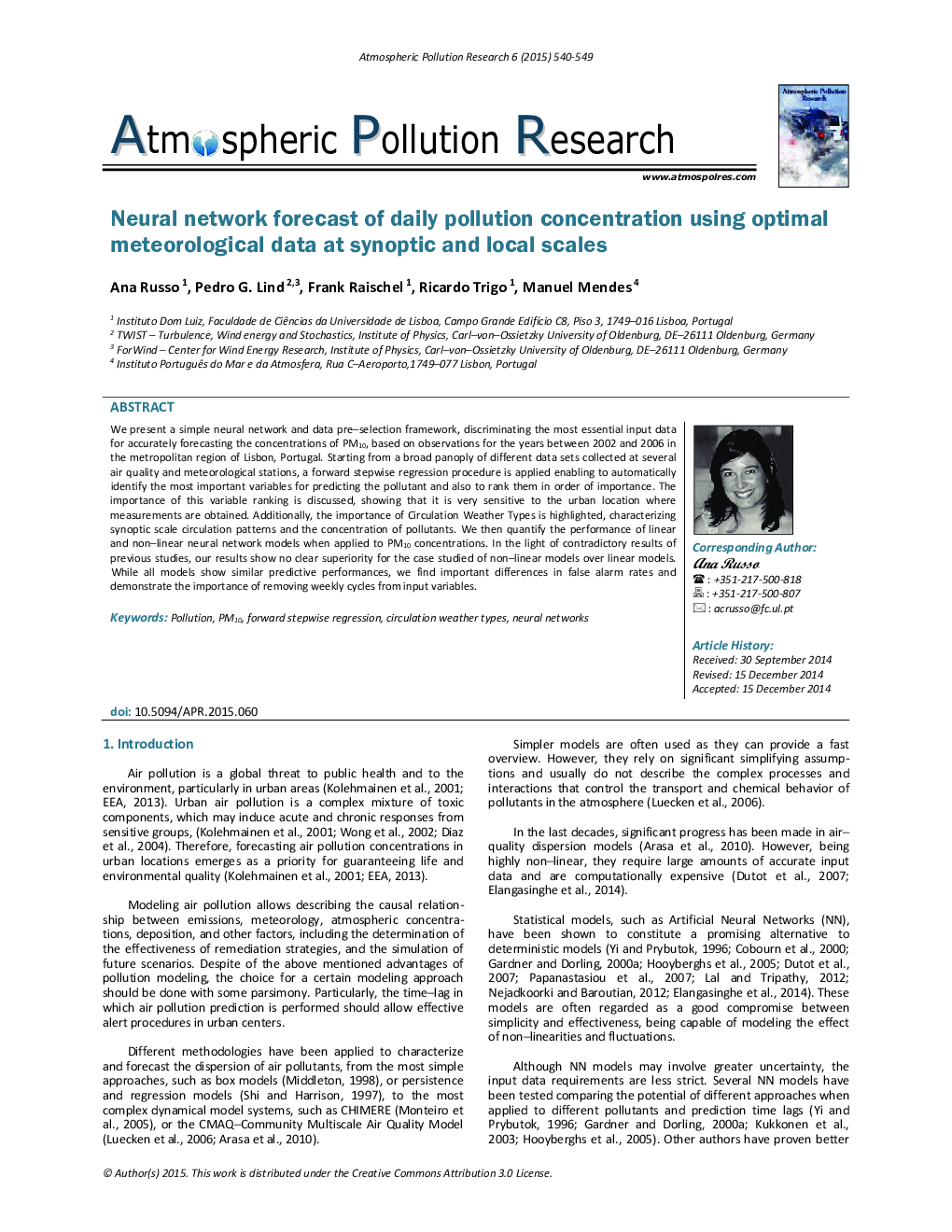| Article ID | Journal | Published Year | Pages | File Type |
|---|---|---|---|---|
| 4434578 | Atmospheric Pollution Research | 2015 | 10 Pages |
We present a simple neural network and data pre–selection framework, discriminating the most essential input data for accurately forecasting the concentrations of PM10, based on observations for the years between 2002 and 2006 in the metropolitan region of Lisbon, Portugal. Starting from a broad panoply of different data sets collected at several air quality and meteorological stations, a forward stepwise regression procedure is applied enabling to automatically identify the most important variables for predicting the pollutant and also to rank them in order of importance. The importance of this variable ranking is discussed, showing that it is very sensitive to the urban location where measurements are obtained. Additionally, the importance of Circulation Weather Types is highlighted, characterizing synoptic scale circulation patterns and the concentration of pollutants. We then quantify the performance of linear and non–linear neural network models when applied to PM10 concentrations. In the light of contradictory results of previous studies, our results show no clear superiority for the case studied of non–linear models over linear models. While all models show similar predictive performances, we find important differences in false alarm rates and demonstrate the importance of removing weekly cycles from input variables.
